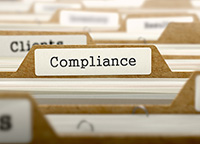Three Things you Need to Know About Preventive Controls
It’s been 5 years since we first started talking about preventive controls, and even though the FDA rules are now final, there is still a fair amount of uncertainty around how to implement the Preventive Controls (PC) rule. Here is what you need to know:
 1) Preventive controls is not the same as HACCP. Despite all the webinars and white papers on this topic, when it comes down to evaluating hazards and identifying preventive controls, there seem to be two major sticking points. The first is in the hazard analysis. Some HACCP plans state that the occurrence of a hazard is unlikely due to prerequisite programs (a supplier program, allergen management etc.). This thinking needs to change. You need to consider the likelihood of the hazard in the absence of prerequisite programs. The hazards may be likely, and as a result, you are using programs such as allergen management, to address them. Once facilities shift their thinking and properly identify a hazard, they are met with the second challenge: how do you know if it needs a preventive control, or if it can be addressed through a PRP? Subjectivity comes into play. In the end, be able to defend your decision.
1) Preventive controls is not the same as HACCP. Despite all the webinars and white papers on this topic, when it comes down to evaluating hazards and identifying preventive controls, there seem to be two major sticking points. The first is in the hazard analysis. Some HACCP plans state that the occurrence of a hazard is unlikely due to prerequisite programs (a supplier program, allergen management etc.). This thinking needs to change. You need to consider the likelihood of the hazard in the absence of prerequisite programs. The hazards may be likely, and as a result, you are using programs such as allergen management, to address them. Once facilities shift their thinking and properly identify a hazard, they are met with the second challenge: how do you know if it needs a preventive control, or if it can be addressed through a PRP? Subjectivity comes into play. In the end, be able to defend your decision.
2) Your current supply chain management program is probably insufficient to meet the regulatory requirements. Many companies have some sort of supplier approval process, and many have ongoing supplier management activities in the form of questionnaires, audits, Certificate of Analysis requirements, etc. Once you determine, based on the hazard analysis, that you rely on your supplier(s) to control an identified hazard, you must be sure your suppliers are controlling that specific hazard. And you may want to separate out those instances where supply chain programs are preventive controls versus where they are just good business practice. This is because, once the PC trigger is pulled, there are some very specific requirements that need to be followed, and FDA will have access to the records related to the program if they are part of your food safety plan.
3) The importance of documentation and record-keeping cannot be overemphasized! Some companies keep inconsistent, incomplete records; others keep pretty good ones. Regardless, take a look at what records you keep, how they are kept (legibility, accessibility, etc.) and who generates and reviews them. Put on your regulator glasses. Are there opportunities for improvement? Most companies would answer yes.
About the Author
Dr. Jennifer McEntire is Vice President, Science Operations, for the Grocery Manufacturers Association, and she uses her background in food microbiology and safety, and experience as a food industry consultant, to help GMA members understand and address scientific and technical issues. At GMA, Dr. McEntire oversees the microbiology, chemistry, processing, packaging, and product forensic teams. She also oversees GMA’s FSMA implementation assistance and training. She holds a Ph.D. in Food Science from Rutgers University, and has worked previously with the Institute of Food Technologists and The Acheson Group.
Interested in more articles like this? Visit GFSR’s web site today!

Categories: Risk Management
Tags:



